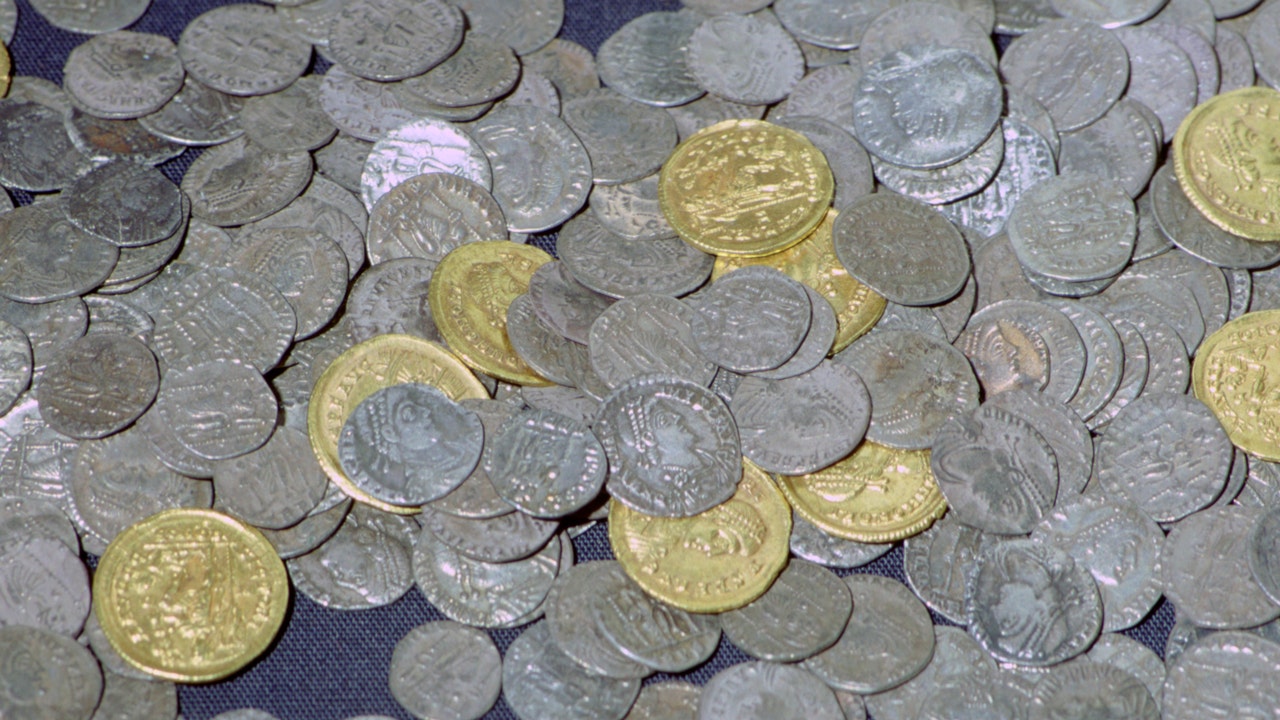World
Greece’s conservative party wins big in national election

Greece’s ruling New Democracy party stormed to a crushing victory in a parliamentary election but fell just short of the threshold needed to form a government on its own.
Prime Minister Kyriakos Mitsotakis and his conservative party had a lead of 40.8 percent of the vote based on more than 90 percent of the ballots counted on Sunday evening, versus 20.1 percent for the left-wing Syriza party led by Alexis Tsipras.
Greece’s interior ministry projected that New Democracy could win 145 seats in parliament, six short of an absolute majority.
“[The exit polls] show a clear victory for New Democracy and a clear renewal of the mandate to continue the major changes sought by Greek society,” government spokesman Akis Skertsos said, as the party began celebrating its strong showing.
If borne out by full results, Sunday’s showing would be a major disappointment for Syriza, and a better-than-expected performance for New Democracy.
But as it fell short of an outright majority to rule alone, the conservative party will struggle to form a government without seeking coalition partners and could be forced to call a new ballot in a month’s time.
New Democracy indicated it would prefer to seek a clear win in a second election and be able to govern on its own.
“We have said that we want to govern outright because that would ensure stability and the way forward. So we have the right to ask the Greek people for that in the next election,” Public Order Minister Takis Theodorikakos said on Skai television shortly after polls closed Sunday evening.
The election was held under a new law of proportional representation, which makes it particularly difficult for any one party to win enough parliamentary seats to form a government on its own.
If a second election is held, likely in late June or early July, the law will change again, shifting to a system that rewards the leading party with bonus seats and making it easier for it to win a parliamentary majority.
Political disengagement among youth
University student Petros Apostolakis expressed his discontent with the exit polls. “I’m not very happy [with the results…] For the past few years, I’ve seen [the] New Democracy party implementing agendas that have nothing to do with the interests of my generation,” he told Al Jazeera in Athens, citing climate change and the steep housing prices as some of the issues that had been neglected.
George Tzogopoulos, lecturer at the Democritus University of Thrace, told Al Jazeera that young people were dissatisfied with the political class as a whole. “But what happened is that they didn’t show up and vote, they expressed their anger with demonstrations or through social media [instead],” he said.
“This is how New Democracy managed to score such an impressive success,” Tzogopoulos added.
Sunday’s election is Greece’s first since its economy ceased being under strict supervision by international lenders who had provided bailout funds during the country’s nearly decade-long financial crisis.
Mitsotakis, a 55-year-old Harvard-educated former banking executive, won 2019 elections on a promise of business-oriented reforms and has vowed to continue tax cuts, boost investments and bolster middle-class employment.
His popularity took a hit following a February 28 rail disaster that killed 57 people after an intercity passenger train was accidentally put on the same rail line as an oncoming freight train. It was later revealed that train stations were poorly staffed and safety infrastructure broken and outdated.
Thousands of people, many of them university students like the railway disaster victims, staged rallies across Greek cities to protest what they saw as negligence on the part of the government.
The government was also battered by a surveillance scandal in which journalists and prominent Greek politicians discovered spyware on their phones. The revelations deepened mistrust among the country’s political parties at a time when consensus may be badly needed.
In spite of that, the prime minister had been steadily ahead in opinion polls in the run-up to the election.
Tsipras, 48, served as prime minister during some of the most tumultuous years of the crisis. He struggled to regain the wide support he enjoyed when he swept to power in 2015 on a promise of reversing bailout-imposed austerity measures.
Senior Syriza official Dimitris Papadimoulis, a European Parliament vice-president, told state TV ERT that if confirmed, the result would be “significantly far” from the party’s goals and would mark a failure to rally opposition to the government.
Greece’s once-dominant Panhellenic Socialist Movement (PASOK) party is likely to be at the centre of any coalition talks. Exit polls have the potential kingmaker between 9.5 and 12.5 percent.
PASOK’s leader, Nikos Androulakis, 44, was at the centre of the wiretapping scandal in which his phone was targeted for surveillance.
But Androulakis’s poor relationship with Mitsotakis, who he accuses of covering up the wiretapping scandal, means a deal with the conservatives would be difficult. His relationship with Tsipras – who he has accused of trying to poach PASOK voters – is also poor.
In the run-up to the vote, Androulakis had firmly ruled out forming a partnership with Mitsotakis’s conservatives.

World
The history of the Hoxne Hoard, the largest collection of Roman treasure found in Britain

The Hoxne Hoard is one of Britain’s unique archaeological finds, not just by its value, but also by how it was found.
Various sources note the Hoxne Hoard as the largest hoard of Roman treasure ever found in Britain. The collection of treasures is heavily made up of gold and silver coins, though there are other objects, such as tableware and jewelry that were also found.
How this collection of ancient treasures was found adds to its uniqueness.
The Hoxne Hoard is primarily made up of coins. (CM Dixon/Print Collector/Getty Images)
SANXINGDUI RUINS WERE DISCOVERED ACCIDENTALLY BY A FARMER; HAS SINCE BEEN THE SITE OF OVER 60K RELICS
On Nov. 16, 1992, Eric Lawes was scouring a field in Hoxne village in Suffolk, not on the hunt for hidden treasure, but simply looking for a hammer that had been lost on the land.
Lawes was scanning the area with his metal detector, when he came across a small portion of the treasures within what would become the Hoxne Hoard.
After shoveling up some of the silver spoons and gold coins he found, he quickly reported his find to be properly excavated.
Lawes was awarded £1.75 million for his find, which he shared with the farmer who owned the land the treasures were discovered on, according to the Smithsonian Magazine.

While looking for a lost hammer with a metal detector, a man came across a find far bigger. This discovery later became known as the Hoxne Hoard. (iStock)
THE 4,000 ITEMS IN THE STAFFORDSHIRE HOARD MAKE IT THE LARGEST COLLECTION IN HISTORY OF ITS KIND
The very next day, the Suffolk County Council Archaeology Service (SCCAS) was on the scene, according to the World History Encyclopedia.
The gold and silver artifacts part of the Hoxne Hoard weigh around 60 pounds in total, according to Ancient Origins. There are around 15,000 Roman coins as part of the collection, per The British Museum, where many of the items are displayed today. The items were buried in the 5th century A.D.
Other unique finds include pieces of jewelry, like a body chain, six necklaces, three finger rings and gold bracelets, according to the source.

There were many pieces of jewelry found as part of the Hoxne Hoard, including gold bracelets. (CM Dixon/Print Collector/Getty Images)
MOM, SON DIG UP ANCIENT OBJECT OFTEN FOUND NEAR BURIAL GROUNDS WHILE GARDENING
Even though the Hoxne Hoard is heavily made up of coins, one of the best-known treasures that was found was the “Empress” pepper pot. This pot was one of four that were excavated from the site, according to The British Museum. The pepper pot is intricately formed to represent a woman.
Additionally, there were many tableware items that were part of the hoard, including a set of 19 spoons, in good condition, that were decorated with marine themes, according to The British Museum.
Archaeologists believe that the Hoxne Hoard was buried no later than 450 A.D., according to Ancient Origins.
At the end of the 4th century A.D., the western Roman Empire was in a place of uncertainty, with Roman soldiers exiting Britain, leaving citizens to fend for themselves.

One of the significant finds of the Hoxne Hoard is the pepper pot pictured above. (CM Dixon/Print Collector/Getty Images)
While experts have posed varying hypotheses as to why the hoard was buried, one common suggestion is that it was done for protection, with the intent of the owners collecting their precious items once again. In the case of the Hoxne Hoard, the items were never retrieved by their owners.
Today, the Hoxne Hoard is on display at the British Museum in London. The display contains many of the coins, jewelry and tableware, as well as Lawes’ hammer, which he was originally looking for when he stumbled upon the far more significant discovery.
World
Greece confronts disastrously low birth rate in Aegean Islands

At 1.3 babies per woman, Greece’s fertility rate is among Europe’s lowest — and well below the threshold for population growth.
Authorities in the Aegean Islands have warned that low birth rates spell disaster for their region.
Mayors from the islands expressed serious concerns during the 15th Congress of Small Islands in Milos, where they lamented the continuous downward trend of Greece’s births-to-deaths ratio and said the consequences were already visible in their communities.
A case in point is Agios Efstratios, a small island in the north Aegean with no more than 250 inhabitants.
‘’There are no girls on the island. Or at least there are no more than 2 women under 30 years old,” said Kostas Sinanis, the local mayor.
“The same goes for the boys. We need to search for the incentives that will bring the young boys and girls back to the island, the place where they were born and raised, to create their families. Unfortunately, we had one birth last year and another one three years ago.”
In 2022, Greece recorded its lowest number of births in 92 years — and this year, the country posted the second-largest population decrease in the EU.
Greece’s fertility rate is among the continent’s lowest at 1.3 babies per woman, well below the 2.5 needed for population growth. Economic forecasts indicate its workforce will fall by 50% by 2100, with its output shrinking by 31% over the same period.
Michalis Vlastarakis of the Eurobank Group warned that if nothing is done, disaster will follow.
‘’If we don’t do something, in about 25 years from now, in two decades, one-third of the population will be over 65 years old, and in 2050 we will be 2.5 million less”, said Vlastakaris.
“You don’t need to have studied finance to understand the consequences of these projections on economic indicators, GDP, the workforce, the insurance system, pensions, health, and education, even since there’re going to be fewer schools.’’
Greece’s family ministry said a few days ago that it plans to spend €20 billion through 2035 on incentives to halt the decline, including cash benefits and tax breaks.
The government already spends around €1 billion a year on pro-child measures — but like other European countries doing the same, it has seen little impact.
World
Jon Batiste's 'Beethoven Blues' transforms classical works into unique blues and gospel renditions
NEW YORK (AP) — When Grammy-award winner Jon Batiste was a kid, say, 9 or 10 years old, he moved between musical worlds — participating in local, classical piano competitions by day, then “gigging in night haunts in the heart of New Orleans.”
Free from the rigidity of genre, but also a dedicated student of it, his tastes wove into one another. He’d find himself transforming canonized classical works into blues or gospel songs, injecting them with the style-agnostic soulfulness he’s become known for. On Nov. 15, Batiste will release his first ever album of solo piano work, a collection of similar compositions.
Titled “Beethoven Blues (Batiste Piano Series, Vol. 1),” across 11 tracks, Batiste collaborates, in a way, with Beethoven, reimagining the German pianist’s instantly recognizable works into something fluid, extending across musical histories. Kicking off with the lead single “Für Elise-Batiste,” with its simple intro known the world over as one of the first pieces of music beginners learn on piano, he morphs the song into ebullient blues.
“My private practice has always been kind of in reverence to, of course, but also to demystify the mythology around these composers,” he told The Associated Press in an interview ahead of Wednesday’s album release announcement.
The album was written through a process called “spontaneous composition,” which he views as a lost art in classical music. It’s extemporization; Batiste sits at the piano and interpolates Beethoven’s masterpieces to make them his own.
“The approach is to think about, if I were both in conversation with Beethoven, but also if Beethoven himself were here today, and he was sitting at the piano, what would the approach be?” he explained. “And blending both, you know, my approach to artistry and creativity and what my imagined approach of how a contemporary Beethoven would approach these works.”
There is a division, he said, in a popular understanding of music where “pristine and preserved and European” genres are viewed as more valuable than “something that’s Black and sweaty and improvisational.” This album, like most of his work, disrupts the assumption.
Contrary to what many might think, Batiste said that Beethoven’s rhythms are African. “On a basic technical level, he’s doing the thing that African music ingenuity brought to the world, which is he’s playing in both a two meter and a three meter at once, almost all the time. He’s playing in two different time signatures at once, almost exclusively,” he said.
Batiste performs during the Bonnaroo Music & Arts Festival this year. (Photo by Amy Harris/Invision/AP, File)
“When you hear a drum circle, you know, the African diasporic tradition of playing in time together, you’re hearing multiple different meters happening at once,” he continued. “In general, he’s layering all of the practice of classical music and symphonic music with this deeply African rhythmic practice, so it’s sophisticated.”
“Beethoven Blues” honors that complexity. “I’m deeply repelled by the classism and the culture system that we’ve set up that degrades some and elevates others. And ultimately the main thing that I’m drawn in by is how excellence transcends race,” he said.
When these songs are performed live, given their spontaneous nature, they will never sound exactly like they do on record, and no two sets will be the same. “If you were to come and see me perform these works 10 times in a row, you’d hear not only a new version of Beethoven, but you would also get a completely new concert of Beethoven,” he said.
“Beethoven Blues” is the first in a piano series — just how many will there be, and over what time frame, and what they will look like? Well, he’s keeping his options open.
“The themes of the piano series are going to be based on, you know, whatever is timely for me in that moment of my development, whatever I’m exploring in terms of my artistry. It could be another series based on a composer,” he said.
“Or it could be something completely different.”
-
/cdn.vox-cdn.com/uploads/chorus_asset/file/25439572/VRG_TEC_Textless.jpg)
/cdn.vox-cdn.com/uploads/chorus_asset/file/25439572/VRG_TEC_Textless.jpg) Technology7 days ago
Technology7 days agoCharter will offer Peacock for free with some cable subscriptions next year
-

 World6 days ago
World6 days agoUkrainian stronghold Vuhledar falls to Russian offensive after two years of bombardment
-

 World6 days ago
World6 days agoWikiLeaks’ Julian Assange says he pleaded ‘guilty to journalism’ in order to be freed
-

 Technology6 days ago
Technology6 days agoBeware of fraudsters posing as government officials trying to steal your cash
-

 Health4 days ago
Health4 days agoHealth, happiness and helping others are vital parts of free and responsible society, Founding Fathers taught
-

 Virginia1 week ago
Virginia1 week agoStatus for Daniels and Green still uncertain for this week against Virginia Tech; Reuben done for season
-

 Sports5 days ago
Sports5 days agoFreddie Freeman says his ankle sprain is worst injury he's ever tried to play through
-

 News4 days ago
News4 days agoLebanon says 50 medics killed in past three days as Israel extends its bombardment








/cdn.vox-cdn.com/uploads/chorus_asset/file/22259288/Apple_dan_riccio_begins_a_new_chapter_at_apple_01252020_big.jpg.large_2x.jpg)








